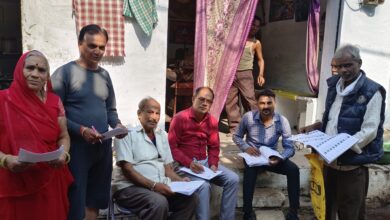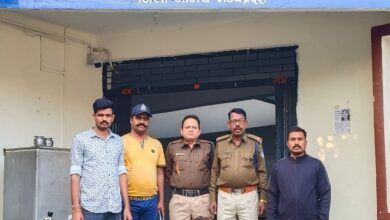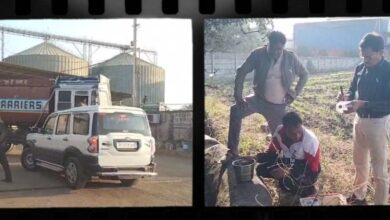धारा 370 क्या है? What is Article 370, supreme court verdict on article 370
History of Article 370
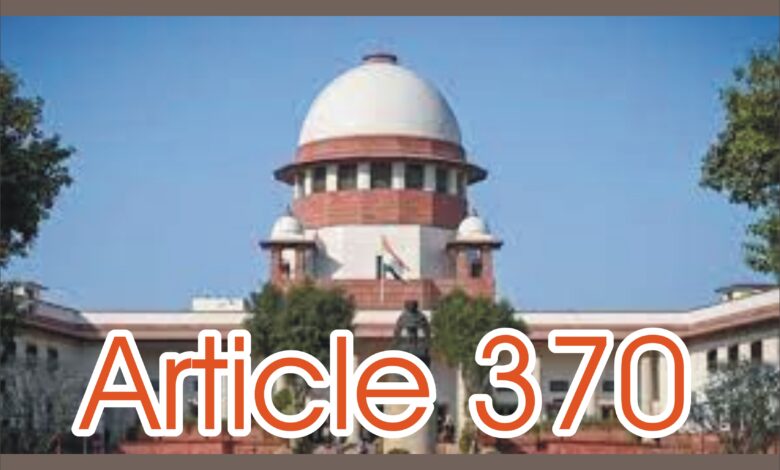
Article 370 What is it?
Article 370 of the Constitution, which grants Jammu and Kashmir a special status, is to be repealed, according to Home Minister Amit Shah.
धारा 370 क्या है?
केंद्रीय गृह मंत्री अमित शाह ने संविधान के अनुच्छेद 370 को खत्म करने की घोषणा की है, जो जम्मू-कश्मीर राज्य को विशेष दर्जा प्रदान करता है।
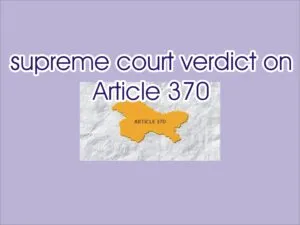
The past (History of Article 370)
The three areas included in the Instrument of Accession, which was signed in October 1947 by the then-Maharaja of Kashmir, Hari Singh, marked the transfer of power from Jammu & Kashmir to the Indian government:
1. International Relations
2. Armaments
3. Exchange of Information
Sheikh Abdullah served as prime minister of the state’s provisional administration, which was established by the Maharaja in March 1948. Following their membership in the Indian Constituent Assembly in July 1949, Sheikh Abdullah and three other colleagues negotiated the unique status of Jammu and Kashmir, which resulted in the approval of Article 370. Sheikh Abdullah was the author of the contentious clause.
इतिहास
अक्टूबर 1947 में, कश्मीर के तत्कालीन महाराजा, हरि सिंह ने विलय पत्र पर हस्ताक्षर किए, जिसमें तीन विषयों को निर्दिष्ट किया गया था, जिन पर जम्मू और कश्मीर अपनी शक्ति भारत सरकार को हस्तांतरित करेगा:
1. विदेशी मामले
2. रक्षा
3. संचार
मार्च 1948 में, महाराजा ने राज्य में एक अंतरिम सरकार नियुक्त की, जिसके प्रधान मंत्री शेख अब्दुल्ला थे। जुलाई 1949 में, शेख अब्दुल्ला और तीन अन्य सहयोगी भारतीय संविधान सभा में शामिल हुए और जम्मू-कश्मीर की विशेष स्थिति पर बातचीत की, जिसके परिणामस्वरूप अनुच्छेद 370 को अपनाया गया। विवादास्पद प्रावधान शेख अब्दुल्ला द्वारा तैयार किया गया था।
What does Article 370 stipulate?
All legislation in the state must be approved by Parliament, with the exception of those pertaining to communications, foreign affairs, defense, and finance.
Residents in Jammu & Kashmir are subject to different laws on citizenship, property ownership, and fundamental rights than people living in other parts of India. Foreign nationals are prohibited from purchasing real estate in Jammu & Kashmir by Article 370. The Center is not authorized to declare a financial emergency in the state under Article 370.
It is significant to remember that Article 370(1)(c) expressly states that Kashmir is covered by Article 370 and that Article 1 of the Indian Constitution. The Union’s states are enumerated in Article 1. This indicates that the state of J&K is bound to the Indian Union by Article 370. In the absence of new overriding legislation, the state would become independent of India if Article 370 were removed, which is possible through a presidential order.
अनुच्छेद 370 के प्रावधान क्या हैं?
रक्षा, विदेशी मामले, वित्त और संचार के मामलों को छोड़कर राज्य में कानून लागू करने के लिए संसद को जम्मू-कश्मीर सरकार की मंजूरी की आवश्यकता होती है।
जम्मू-कश्मीर के निवासियों की नागरिकता, संपत्ति के स्वामित्व और मौलिक अधिकारों का कानून शेष भारत में रहने वाले निवासियों से अलग है। धारा 370 के तहत दूसरे राज्यों के नागरिक जम्मू-कश्मीर में संपत्ति नहीं खरीद सकते. अनुच्छेद 370 के तहत, केंद्र के पास राज्य में वित्तीय आपातकाल घोषित करने की कोई शक्ति नहीं है।
यह ध्यान रखना महत्वपूर्ण है कि अनुच्छेद 370(1)(सी) में स्पष्ट रूप से उल्लेख है कि भारतीय संविधान का अनुच्छेद 1 अनुच्छेद 370 के माध्यम से कश्मीर पर लागू होता है। अनुच्छेद 1 संघ के राज्यों को सूचीबद्ध करता है। इसका मतलब यह है कि यह अनुच्छेद 370 ही है जो जम्मू-कश्मीर राज्य को भारतीय संघ से जोड़ता है। अनुच्छेद 370 को हटाना, जो राष्ट्रपति के आदेश द्वारा किया जा सकता है, राज्य को भारत से स्वतंत्र कर देगा, जब तक कि नए अधिभावी कानून नहीं बनाए जाते।
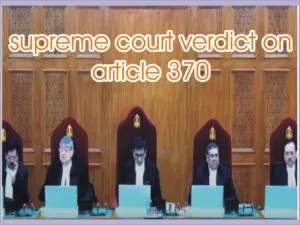
“supreme court verdict on article 370”
The Supreme Court on December 11 upheld the validity of the Union Government’s 2019 decision to repeal the special status of Jammu and Kashmir (J&K) under Article 370 of the Constitution. The court held that the State of J&K had no internal sovereignty and the concurrence of the State Government was not required to apply the Indian Constitution to the State of J&K. It was held that Article 370 was a temporary provision.
In view of the submission of the Solicitor General that the Union will restore the statehood of J&K as soon as possible, the Court did not adjudicate upon the validity of the reorginazation of J&K into Union Territory (UT). However, the carving out of Ladakh as UT was upheld. The Court also issued a direction to the Election Commission of India to take steps to hold elections to the J&K Legislative Assembly by September 30, 2024.
Although the Court held that the Constitutional Order 272 (which changed the meaning of ‘J&K Constituent Assembly’ as ‘J&K Legislative Assembly’ and ‘J&K Government’ as ‘Governor’), this conclusion did not affect the outcome of the judgment since the Court held that the recommendation of J&K Constituent Assembly was not necessary for the President to declare Article 370 as inopeartive.
The Constitution bench of the Supreme Court, led by Chief Justice of India DY Chandrachud and composed of Justices Sanjay Kishan Kaul, Sanjiv Khanna, BR Gavai, and Surya Kant, pronounced the judgement. The Apex Court had reserved the judgement in the matter on 5 September 2023 after hearing it for sixteen long days. There were three judgements in the matter- one by CJI DY Chandrachud for himself and for Justices Gavai and Surya Kant.
The second was a concurring opinion authored by Justice SK Kaul. Justice Sanjiv Khanna concurred with both the judgements. In his judgement, Justice SK Kaul recommended the setting up of an impartial “Truth and Reconciliation Committee” to investigate and report on the violations of human rights both by the State and non-state actors at least since 1980s and recommend measures for reconciliation.
He added that the exercise of the committee shall be carried out in a time bound manner. However, considering the sensitivities of the matter, he held that it was for the government to decide the manner in which the Truth and Reconciliation Commission must be set up.
Issues Framed By The Court
1. Whether provisions of Article 370 were temporary in nature or whether they acquired status of permanence?
2. Whether amendment to Article 367 through exercise of power under Article 370(1)(d) so as to substitute the reference to ‘constituent assembly’ by ‘legislative assembly’ constitutionally valid?
3. Whether entire Constitution of India could have been applied to J&K under Article 370(1(d))?
4. Whether abrogation of Article 370 by President invalid for lack of recommendation of J&K Constituent Assembly as mandated by proviso to clause (3)?
5. Whether the proclamation of the Governor dissolving the legislative assembly of the state constitutionally valid?
6. Whether Proclamation of Presidential rule imposed in December 2018 and subsequent extensions valid?
7. Whether the J&K Reorganisation Act 2019 bifurcating the State into two Union Territories constitutionally valid?
8. Whether during the tenure of proclamation under Article 356 and when the legislative assembly of the State is dissolved, the status of J&K an its conversion into UT valid exercise of power?
Conclusions Reached By Court
1. Court Need Not Adjudicate On Validity Of President’s Rule The court held that it need not adjudicate on the validity of the presidential proclamations announcing President’s Rule in the State since petitioners did not challenge the same. In any case, the court found that no material relief could be given as the President’s Rule was withdrawn in October 2019.
2. Every Decision Of Union When State Is Under President’s Rule Cannot Be Challenged The court held that there are limitations on power of the Union and States when proclamation of presidential rule was in force. It stated that the scope of the power of Union depends on the circumstances. The court added that the exercise of power under Article 356 must have a reasonable nexus with the object of the proclamation. Further, the court stated that there were innumerable decisions taken by Union on behalf of States.
Thus, it added, “Every decision taken by Union on behalf of State during Presidential rule not open to challenge…this will lead to the administration of state to a standstill…” The court rejected the argument of petitioners that Union cannot take actions of irreversible consequences in the State during Presidential rule. Further, the argument of the petitioners that the Parliament can only make the law-making powers of the State when the Presidential rule was in force was also not accepted.
However, the court held that the exercise of Presidents’ power after the proclamation are subject to judicial review. It was held that the power of Parliament under Article 356(1) to exercise powers on behalf of State assembly was not restricted to law making powers.
3. Jammu and Kashmir Did Not Retain An Element Of Sovereignty When It Joined the Union of India The court stated that the Proclamation of Maharaja stated that the Constitution of India will supersede. With this, the court added that the paragraph of Instrument of Accession ceased to exist. The court stated that the constitutional set up did not indicate that Jammu and Kashmir retained sovereignty.
The CJI, in his judgement, stated that there was a clear absence in the Constitution of Jammu and Kashmir to the reference of sovereignty and that the State of Jammu and Kashmir became an integral part of India is evident from Articles 1 and 370 of the Constitution of India. The CJI stated– “All States in the country have legislative and executive power, albeit to differing degrees. Article 371A to 371J are examples of special arrangements for different states. This is an example of asymmetric federalism.” It added that Article 370 was a feature of asymmetric federalism and not sovereignty.
4. Article 370 Is A Temporary Provision The CJI, in his judgement stated that Article 370 was held to be a temporary provision on a historical reading, as per which it was a transitory and temporary provision. The court added that the power of the President under Article 370(3) to issue a notification that Article 370 ceases to exist subsists even after the dissolution of the J&K Constituent Assembly. As per the judgement, the recommendation of the Constituent Assembly was not binding on the President.
It stated that the J&K Constituent Assembly was intended to be a temporary body. When the constituent assembly ceased to exist, the special condition for which 370 was introduced ceased to exist but the situation in the state remained and thus the article continued. The court found that holding that the power under Article 370(3) ceases to exist after the dissolution of the J&K Constituent Assembly would lead to the freezing of the process of integration. The court held that the power under Article 370(3) did not cease after the J&K Constituent assembly ceased to exist.
5. Concurrence of State Government Not Required To Apply All Provisions Of Constitution of India To J&K By Article 370(1)(d) The CJI stated– “This court cannot sit in appeal over the decision of the President of India on whether the special circumstances under Article 370 exist…History shows gradual process of constitutional integration was not going on…It was not as if after 70 years Constitution of India was applied in one go. It was a culmination of the integration process.”
Accordingly it was held that all provisions of the Constitution of India could be applied to J&K using Article 370(1)(d) in one go. In furtherance of the same, it was held that the exercise of Presidential Power was valid. The court held that principle of consultation and collaboration was not required to be followed for the exercise of Presidential power and the concurrence of the State government was not required to apply all provisions of the Constitution using Article 370(1)(d).
Thus, the President taking the concurrence of the Union Government was not mala fide. The court held that the views of the State legislature under Article 3 proviso were recommendatory. Justice SK Kaul, in his judgement, stated – “Purpose of Article 370 was to slowly bring Jammu and Kashmir on par with the other States of India. Requirement of recommendation of J&K Constituent Assembly cannot be read in a manner making the larger intention redundant.”
6. CO 272 To The Extent Of Modifying Article 367 Is Ultra Vires Article 370. The majority judgement authored by the CJI stated that while the change sought to be made by CO 272 appeared to be to Article 367 at the first blush, it effectively changed Article 370. The court found these changes to be substantive. The court stated that the interpretation clause could not be modified to amend an Article bypassing the amendment process.
“We have therefore held that the amendments made to Article 370 by taking recourse to Article 367 as ultra vires,” stated the court while holding that the interpretative clause could not be used to bypass the specific route for a constitutional amendment. “Permitting such amendments by such a surreptitious method would be disastrous,” stated the court.
The court stated that Article 370 could not be amended by exercise of power under Article 370(1)(d). Concurring with the view taken by the CJI in the matter, Justice SK Kaul in his judgement, stated– “Regarding the amendment of Article 370 using 367, I have said when a procedure is prescribed, it has to be followed. Amendment through the backdoor not permissible.” However, the finding of this issue did not materially affect the outcome, since the Court held that the recommendation of J&K Constituent Assembly was not required for the President to declare Article 370 as inoperative.
7. Validity of J&K Reorganisation Act 2019 Not Necessary To Be Adjudicated Upon, Reorganisation Of Ladakh Valid The court noted that the SG had submitted that statehood of J&K would be restored and the status of UT was temporary for J&K. In view of the submission made by the SG, the court stated that it did find it necessary to determine whether the reorginazation of J&K into UT was valid. The reorganisation of Ladakh as Union Territory was upheld as Article 3 allowed a portion of State to be made as UT. The question whether Parliament can convert a State into a Union Territory was left open.
8. Statehood Of J&K To Be Restored At Earliest The court directed that steps shall be taken by the Election Commission of India to conduct elections to the J&K assembly by September 30. Further, it stated that the restoration of statehood shall take place as soon as possible.
9. Constitution Of A Truth And Reconciliation Committee Justice SK Kaul, in his judgment, stated that the first step towards healing the wounds was the acknowledgement of the acts of violations done by the State and its actors. He added that truth-telling paved a way for reconciliation. Accordingly, he recommended the setting up of an impartial “Truth and Reconciliation” committee to investigate and report on the violations of human rights both by the State and non-state actors at least since 1980s and recommend measures for reconciliation.
“The Commission must be set up before memory escapes. The exercise must be time-bound”, he stated while adding that there was an entire generation of youth that had grown up with a feeling of distrust and it was to them that liberation was owed. However, he added– “It is for the government to decide the manner in which the Truth and Reconciliation Commission must be set up, considering the sensitivities of the issues involved.”
He further stated– “Truth and Reconciliation Commission could facilitate a reparative approach, that enables forgiveness for the wounds of the past and forms the basis of achieving a shared national identity.”
Arguments Before The Court
The petitioner counsels argued for the first nine days and stressed upon the unique nature of J&K’s relationship with India which got embodied in the Indian constitutional setup, highlighting that the Maharaja of J&K did not give up the internal sovereignty to the Dominion of India. Thus, while the power to make laws relating to foreign affairs, communication, and defence lied with the Union as per the Instrument of Accession (IoA), the internal sovereignty of J&K which provided it with powers to legislate on all other matters remained with the Maharaja.
It was argued that Article 370 had assumed permanence and was no longer a ‘temporary’ provision post the dissolution of the J&K Constituent Assembly in 1957. The petitioners further contended that the Indian parliament, under the current constitutional framework, could not convert itself into a Constituent Assembly. They also stressed upon the misuse of Article 356, which imposes President’s Rule in a State.
It was emphasised that the purpose of Article 356 was to restore state machinery and not destroy it but the President’s Rule in J&K was imposed to destroy the state legislature. It was added that President’s Rule under Article 356 was in its nature “temporary” and thus permanent actions could not be taken under it. The petitioners also argued that the amendment of Article 370 through Article 367 was invalid.
Finally, it was stated that while Article 3 of the Indian Constitution granted the power to Union to alter the boundaries of states and even create smaller states through bifurcation, it had never before been used to convert an entire state into a Union Territory (UT). The negative impact of turning J&K into a UT on the constitutional structure was also underlined.
Per contra, the Union Government along with other respondents argued that the abrogation of Article 370 resolved the ‘psychological duality’ of the people of J&K and that there existed discrimination against the people of J&K before the abrogation as the Indian constitution was not fully applied to the state prior to 2019.
It was underlined that it was very clear that the Constitution makers foresaw Article 370 as a ‘temporary’ provision and wanted it ‘to die’. Challenging the assertion of an exclusive special status for J&K, the respondents argued that during the late 1930s, a multitude of princely states were in the process of drafting their own constitutions.
It was also submitted that the execution of a merger agreement was not necessary to become a part of the Indian nation. Further, internal sovereignty could not be confused with sovereignty. It was stated that J&K was only converted to a UT owing to it being a sensitive border state for a temporary time period and that its statehood would be restored. It was also argued that if Article 367 was not modified, it would have the effect on Article 370 becoming a permanent feature of the Indian Constitution, as sans the Constituent Assembly, Article 370 could never be modified.
Finally, the respondents asserted that the J&K Constitution was subservient and subordinate to the Indian Constitution and the J&K Constitution never had original constituent powers. Thus, even if the Constituent Assembly had been in existence, it would have a limited role to play in abrogation of Article 370 as its decision would be only “recommendatory” in nature and the President could have taken any decision even if the Constituent Assembly did not agree to the same.
Appearances
For the petitioners- Senior Advocates Kapil Sibal, Gopal Subramanium, Zaffar Shah, Rajeev Dhavan, Dushyant Dave, Chander Uday Singh, Dinesh Dwivedi, Shekhar Naphade, Nitya Ramakrishnan, Gopal Sankaranarayanan, Menaka Guruswamy, Prashanto Chandra Sen, Sanjay Parikh and Advocate Warisha Farasat argued.
For the Union of India : Attorney General for India R Venkataramani, Solicitor General of India Tushar Mehta, Additional Solicitor General KM Nataraj, ASG Vikramjeet Banerjee and Advocate Kanu Agarwal. For the intervenors backing the Union – Senior Advocates Harish Salve, Rakesh Dwivedi, V Giri, Guru Krishnakumar; Advocates Archana Pathak Dave, VK Biju and Charu Mathur.
Also Read :विजय दिवस के बहादुर वीरों के प्रति पूरा देश नतमस्तक
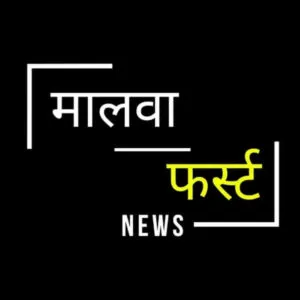
Supreme Court, Supreme Court 2023, Article 370 Pleas, Article 370, Jammu and Kashmir, Jammu and Kashmir Government, Abrogation of Article 370, In Re Article 370 of the Constitution, धारा 370 क्या है, What is Article 370, supreme court verdict on article 370


